In CS255, you learned how the CPU and memory is connected in this way:
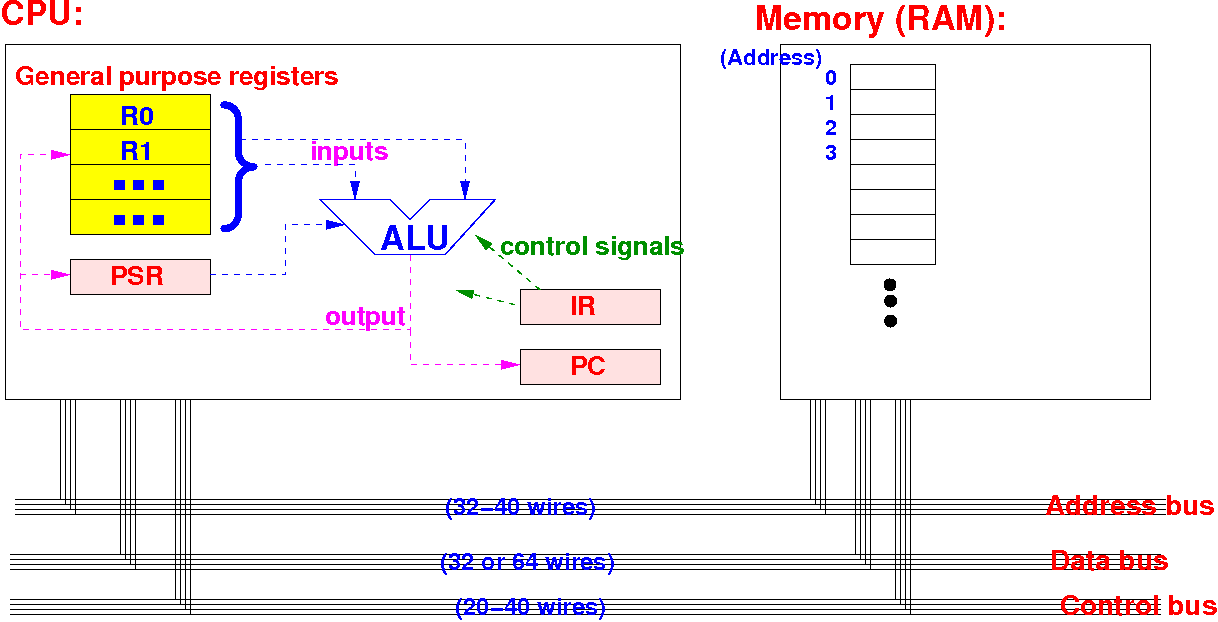
CS255 has omitted some special purpose registers for simplicity !!
These special purpose registers are "buffers" used to store intermediate data to simplify the circuitry
The Memory Address Register (MAR) contains the address value sent on the address bus:

The MAR contains an address
The MAR's purpose is to transmit the address on the address bus (it must keep the address signals stable)
Example: when CPU executes ldr R1,[R0], the CPU first writes R0 into the MAR register:
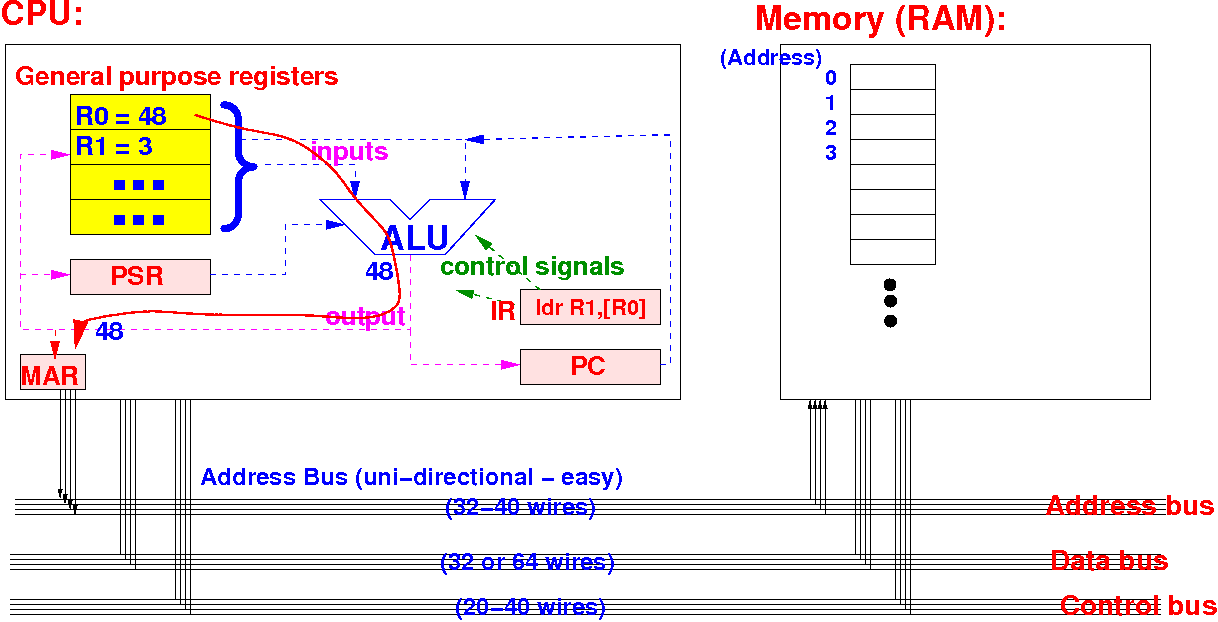
Example: ... and then the MAR register sends its address onto the data bus (wires):

The MAR register consists of N (32 to 35 or so) D-flipflops (depends of memory size):

The inputs of the
D-flipflops are
connected to the
ALU output
The outputs of the
D-flipflops are
connected to the
address bus
The (uni-directional) address bus will send the address value in the MAR to the memory (circuit).
The Memory Data Register (MDR) is used to buffer the data being send/receive on the data bus:
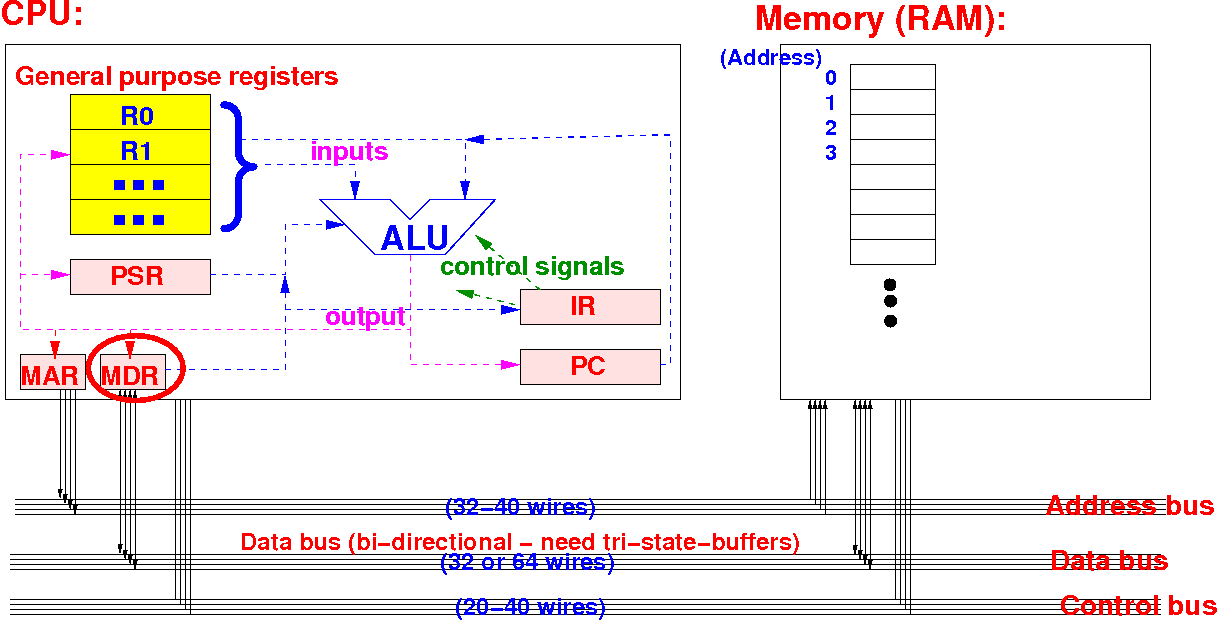
The MDR contains the data in transit (being transfered) between the CPU and the memory
Example: when CPU executes ldr R1,[R0], the memory will return the data at address R0
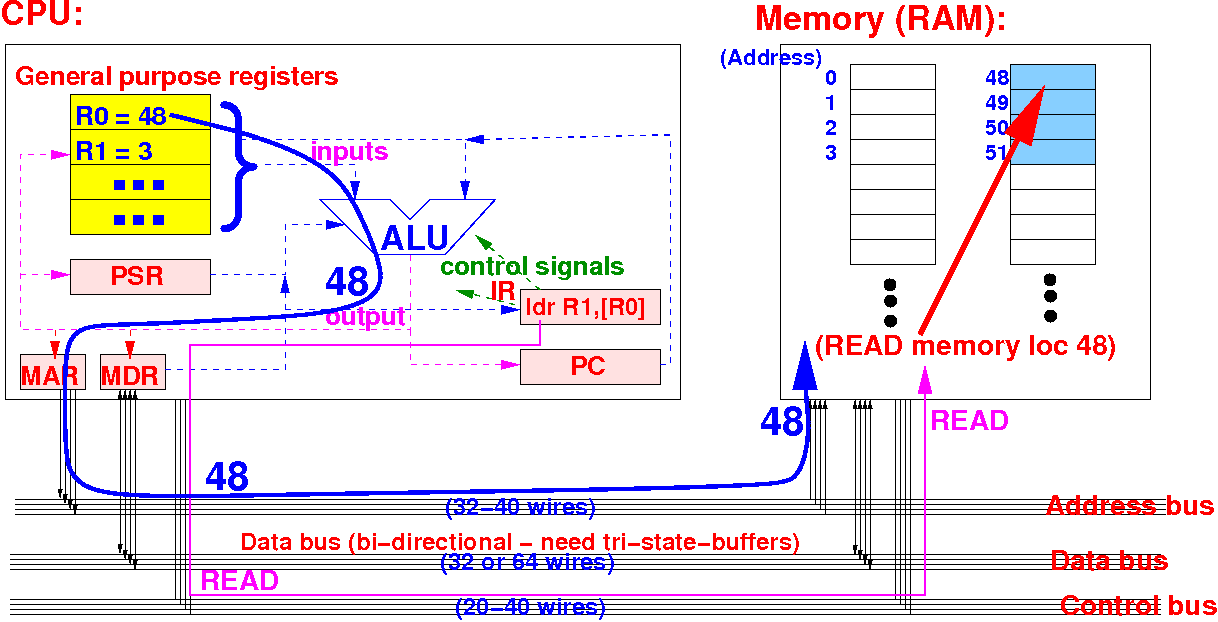
Suppose the databus has 32 bits: then 4 bytes starting at address 48 are transfered
Example: ... the memory data is first stored in the MDR register
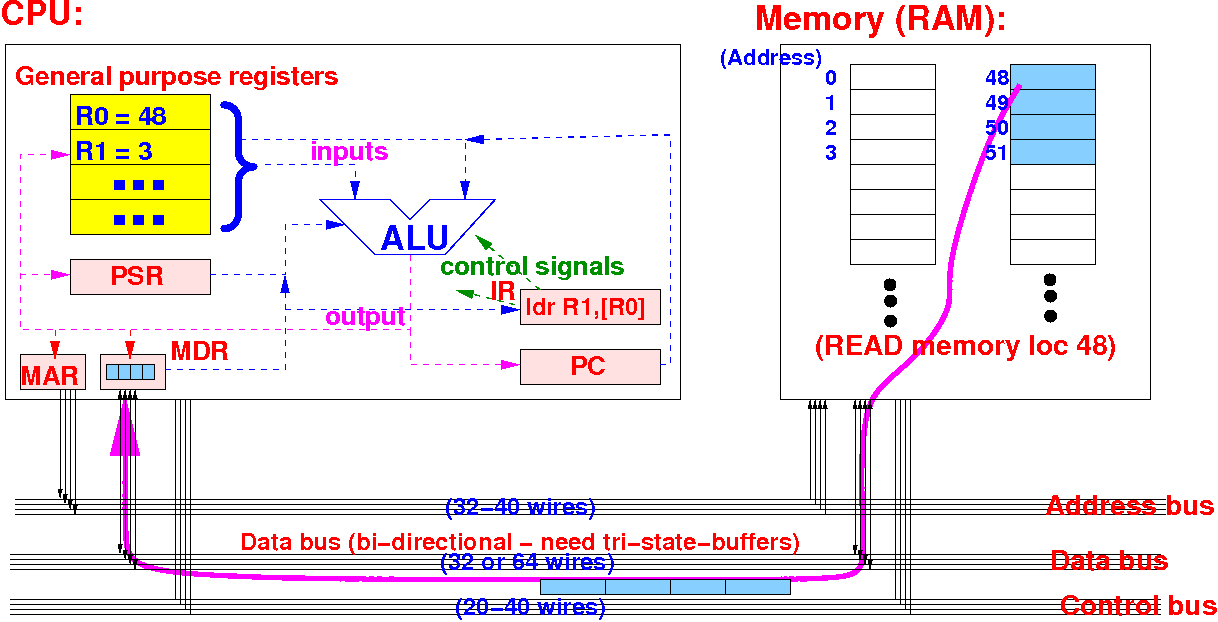
Example: ... and then forwarded to the destination register R1
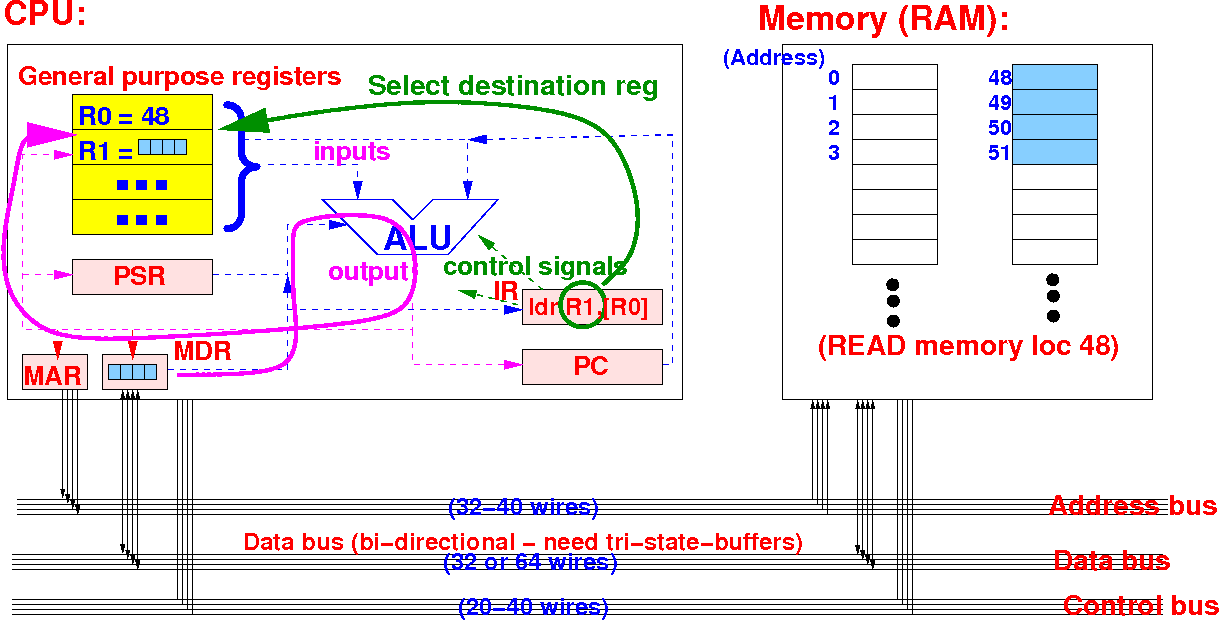
The MDR register consists of N (32 or 64) D-flipflips:

The outputs of the D-flipflops must be connected through tri-state-buffers to prevent short-circuit (because the databus is bi-directional) !!
Next, we will study how to connect a memory circuit to the system bus:
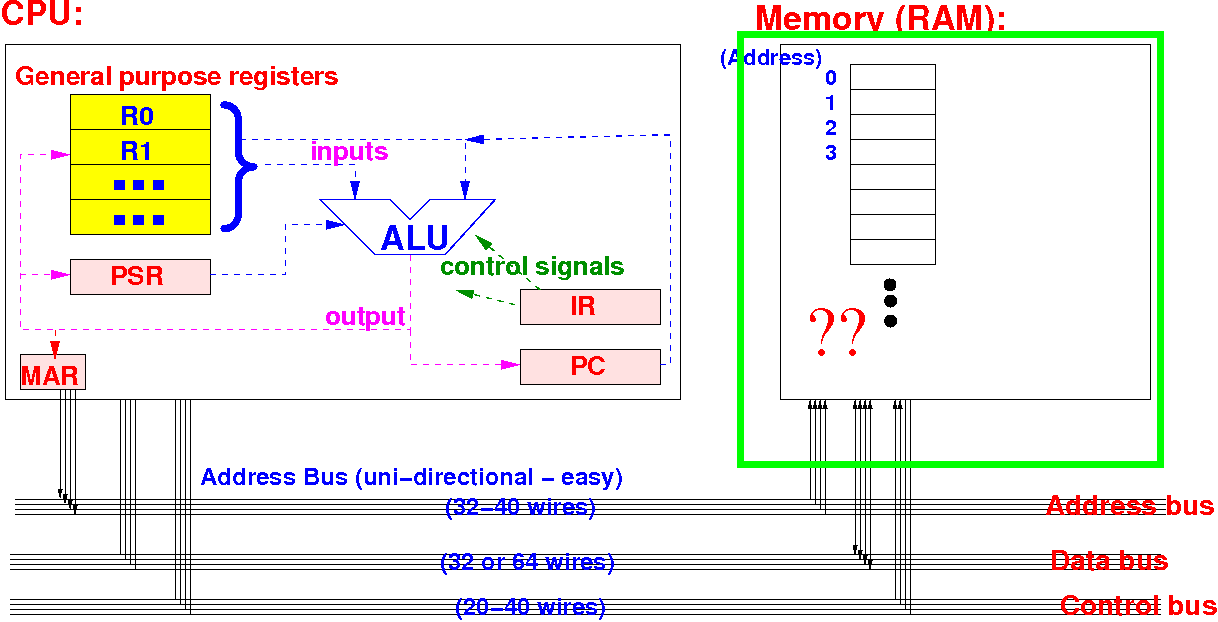
Important fact: the memory circuit must handle both read and write operations !!
The CPU sends
(1) the
address on the
address bus and
(2) a
READ command on the
control bus:
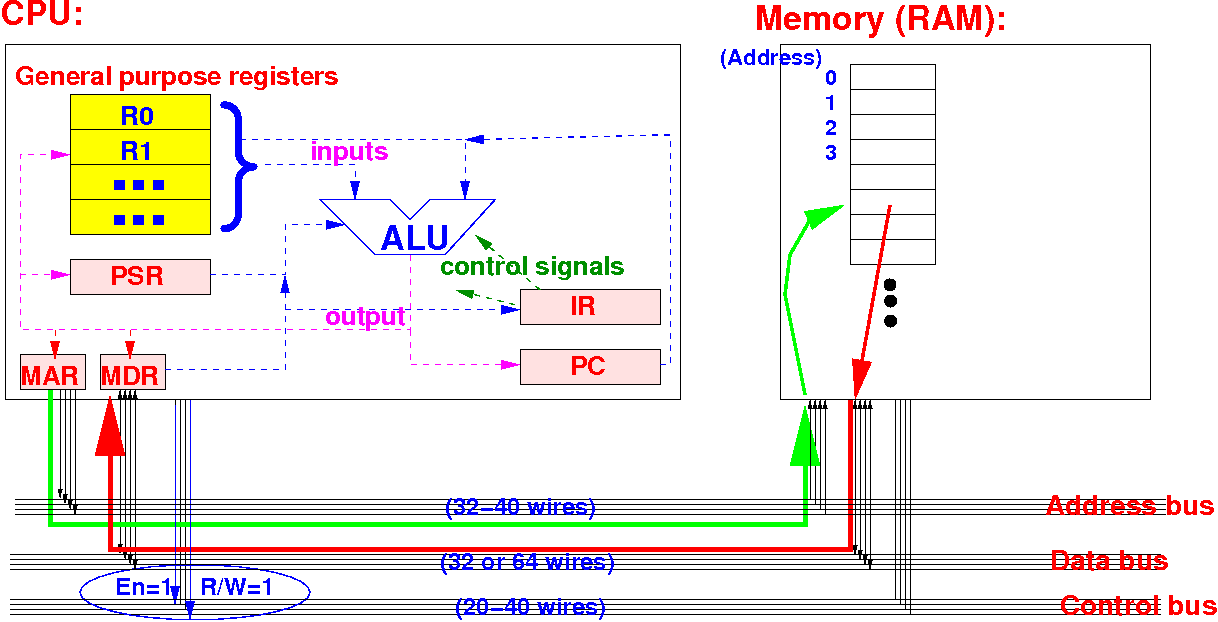
The READ command is expressed using the signals: EN (enable)=1 and R/W (Read/Write)=1
Note: In response, the memory sends back the requested data
The CPU sends (1) the address on the address bus, (2) the data on the data bus and (3) a WRITE command on the control bus:

The WRITE command is expressed using the signals: EN (enable)=1 and R/W (Read/Write)= 0
Note: In response, the memory stores the sent data
|
Example: in order to read any data from memory 0, 1, 2, 3 , the CPU uses address 0:
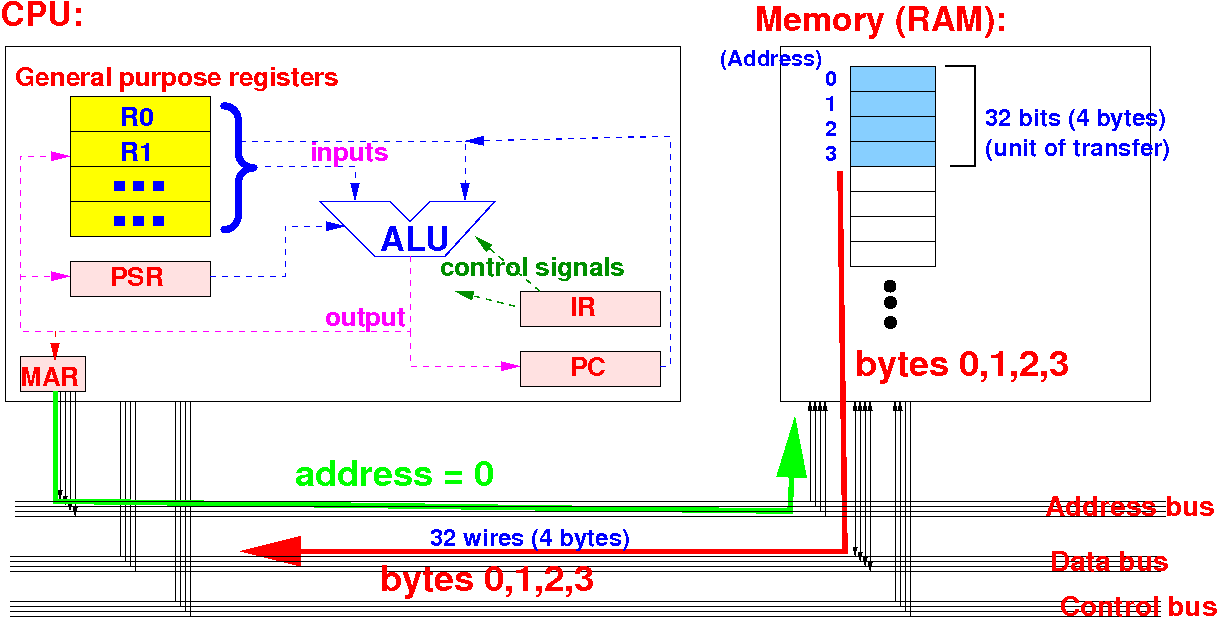
This is the reason why programming languages impose the alignment requirement...
Example: in order to read any data from memory 4, 5, 6, 7 , the CPU uses address 4 :
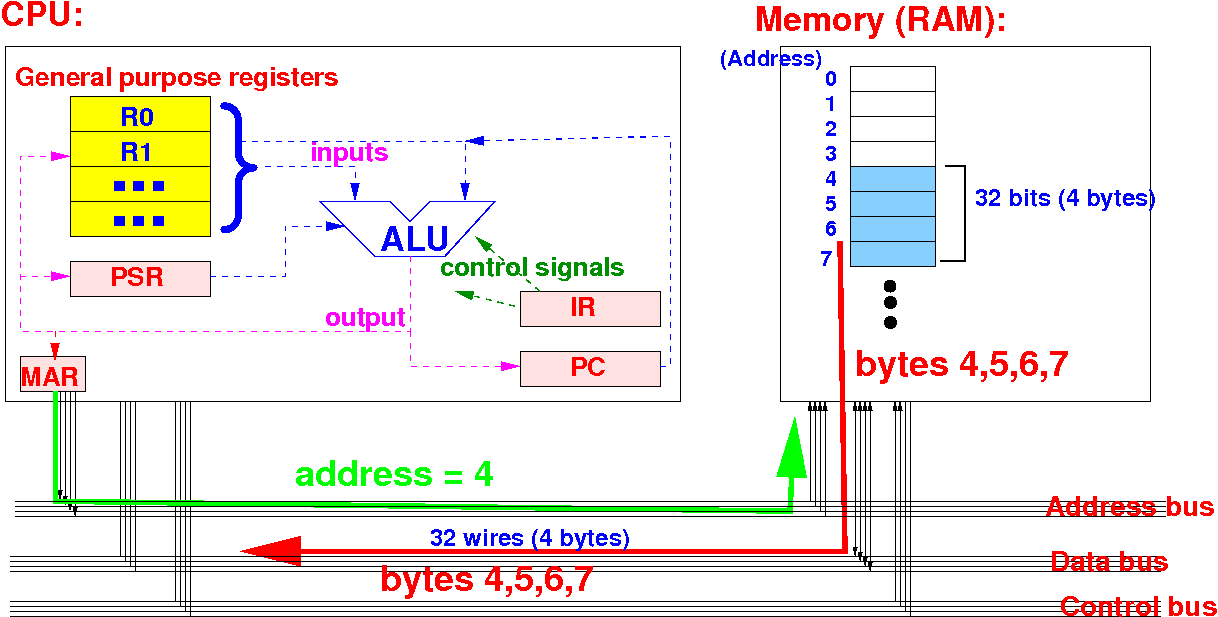
This is the reason why programming languages impose the alignment requirement...
For now, take note of the locations of the address, data and control buses in this diagram:
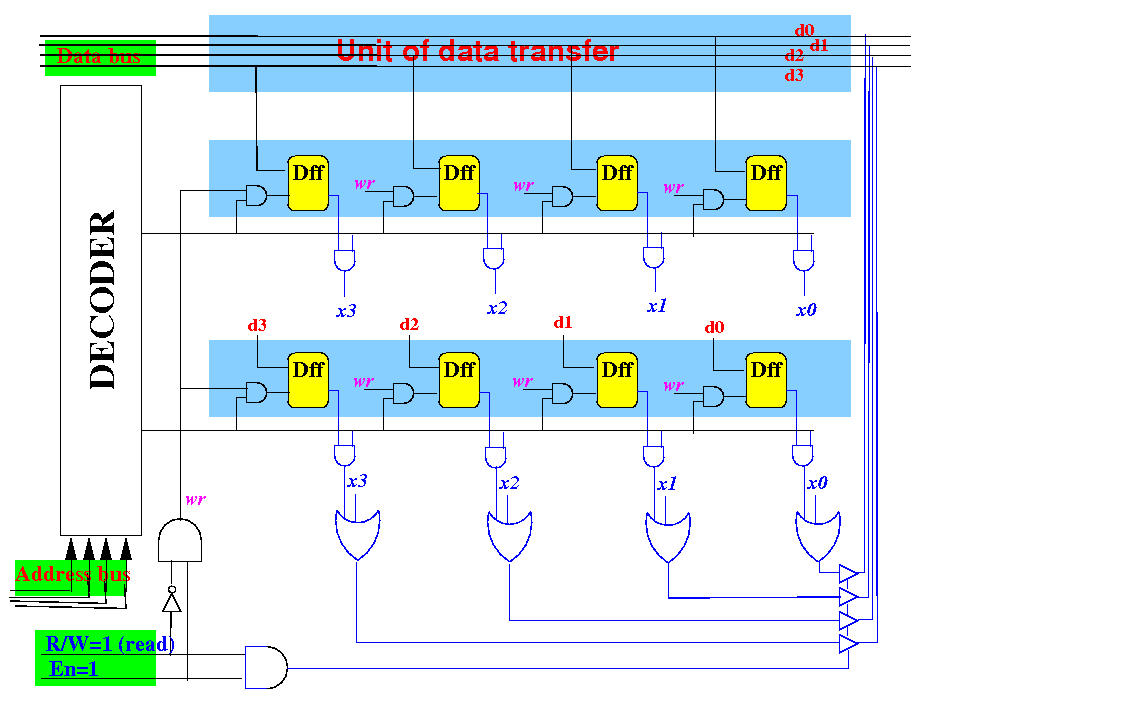
Each row of the memory circuit contains the same number of Dffs as the number of wires on the data bus (= unit of transfer)
The CPU sends out the address, the data and a write command on the system bus:

We use a decoder to translate the address into a selection:
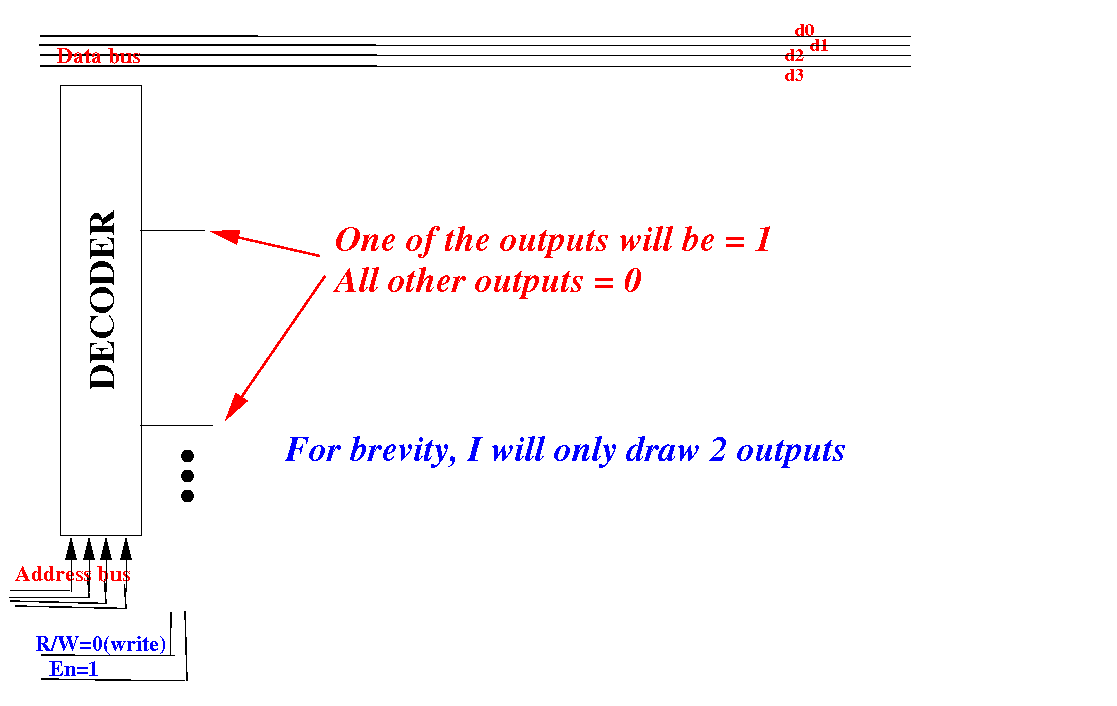
Connect N 1-bit-memory to receive the data for address=0000
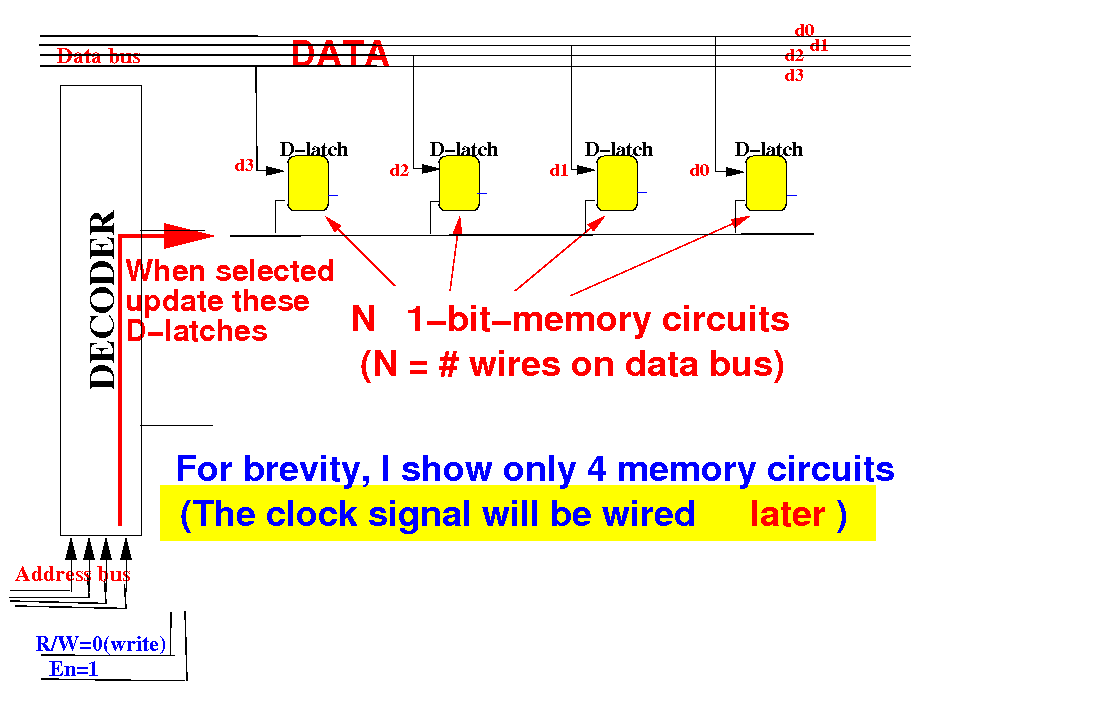
Connect another N 1-bit-memory to receive the data for address=0001

We control to writing of a row of memory cells by a write signal:

Make the (simple) write control circuit:

Sample operation: if memory cell 0001 is selected, the data is stored in the 1st row of cells

Consider the memory circuit we have so far: (connected for the write operation)

What will the memory circuit do if the CPU sends out a READ command/operation ???
Notice that the circuit will not update any of the memory cells: (which is the correct behavior !)

The AND gate will output 0 which prevents the Decoder outputs from writing any memory cell
We use a decoder output as a filter control signal on the outputs of a row of memory cells:
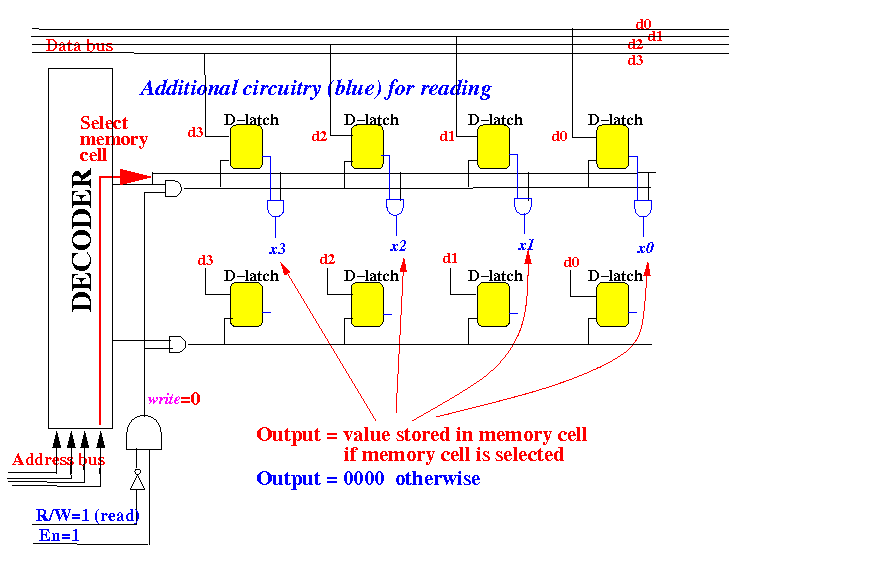
The filtering is necessary because we will (later) use an OR gate to collate all the bits
Repeat the filtering connection for every row of memory cells:
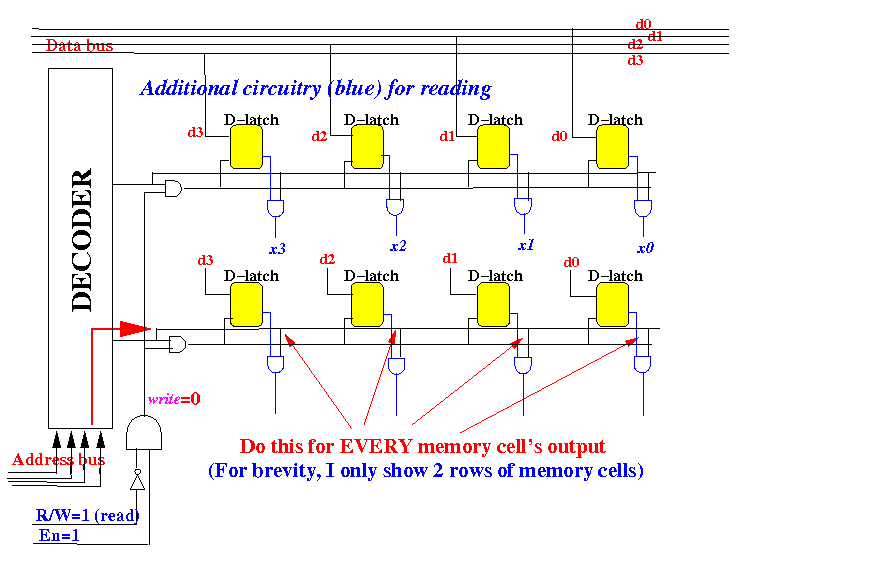
Use an OR-gate to collate all the outputs (all but 1 row will be non-ZERO !):
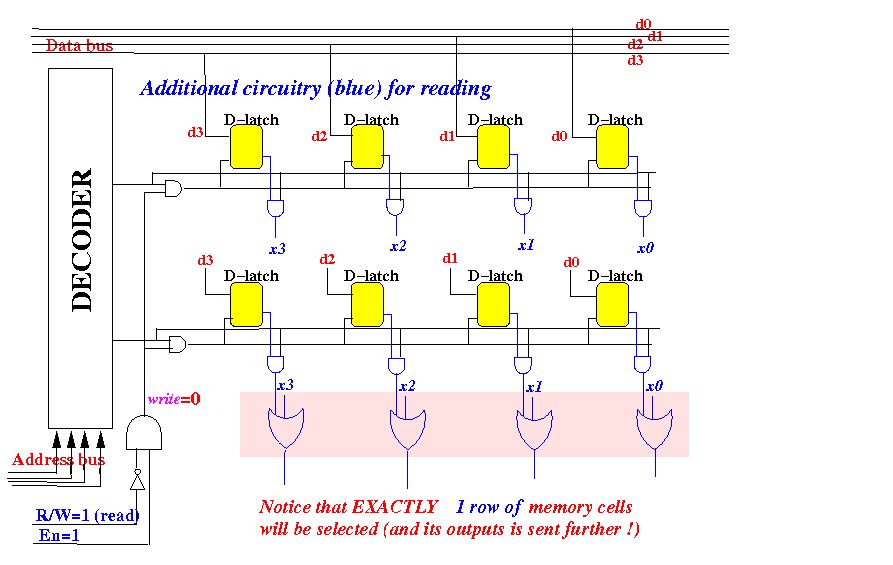
Connect the outputs to the data bus through tri-state-buffers:

We activate the tri-state-buffers when the CPU issues a READ operation:
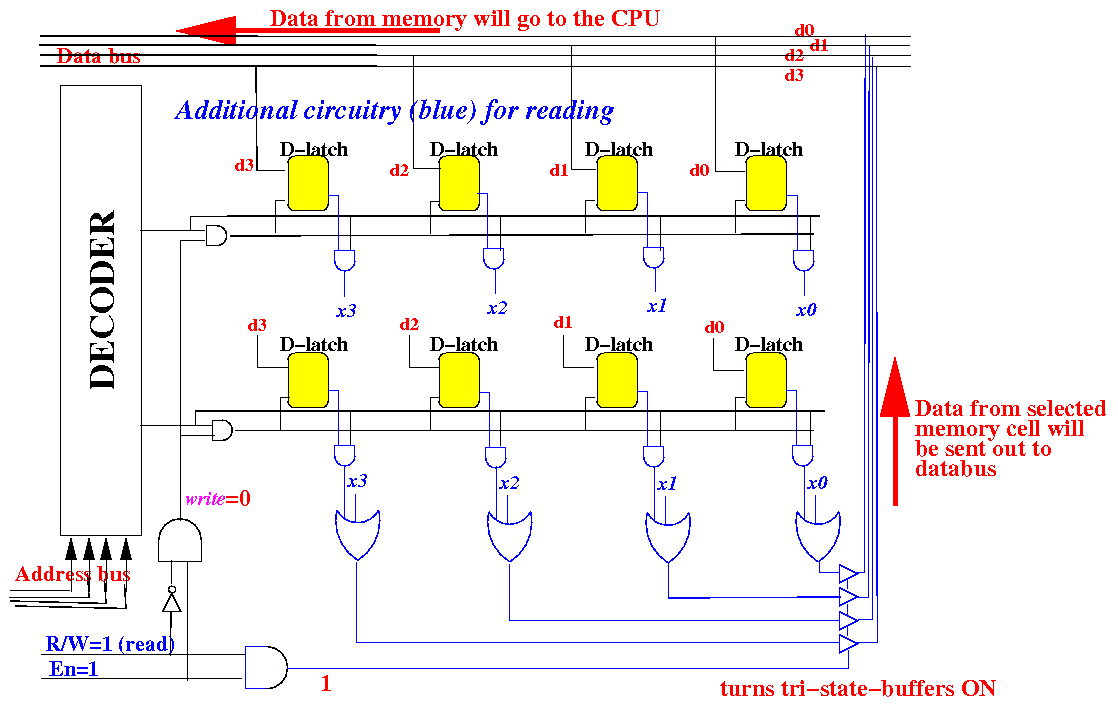
DEMO: /home/cs355001/demo/circuits/memory-circuit
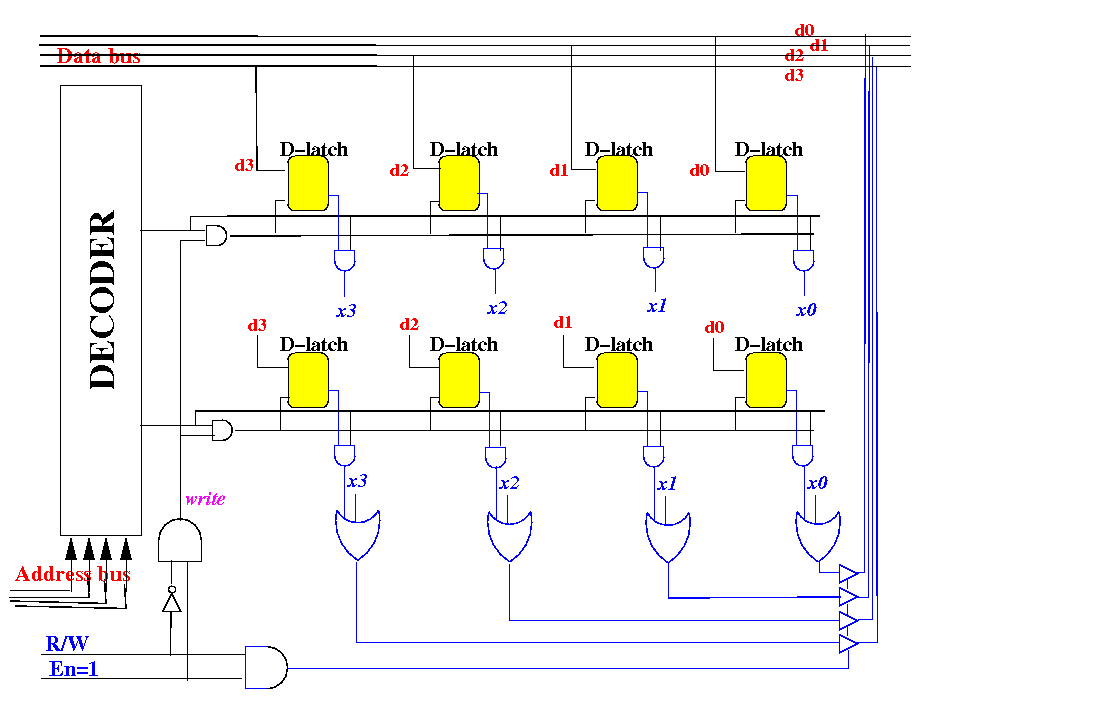
|
|
|